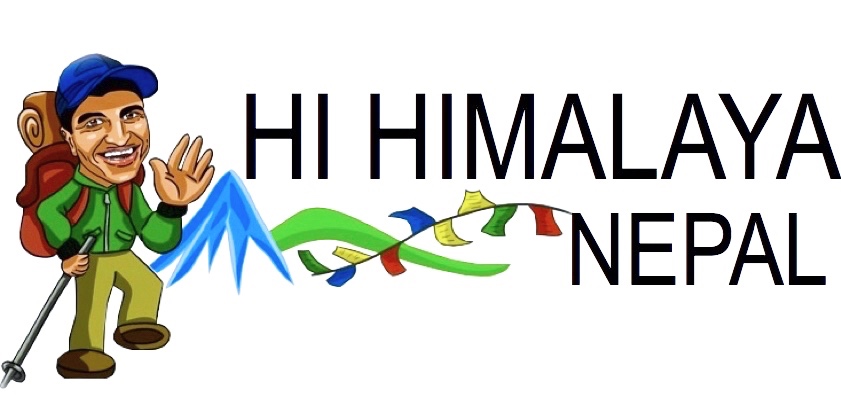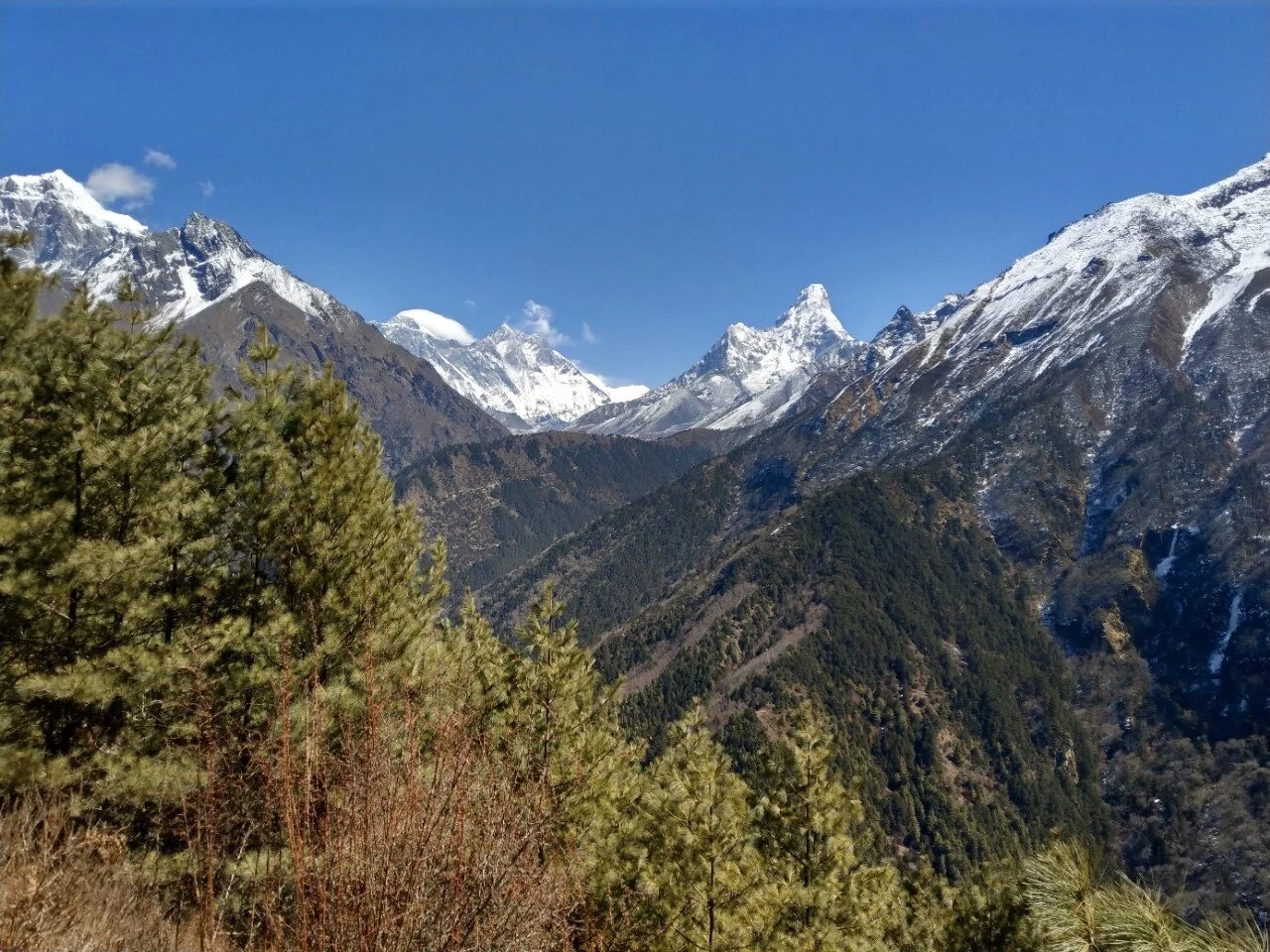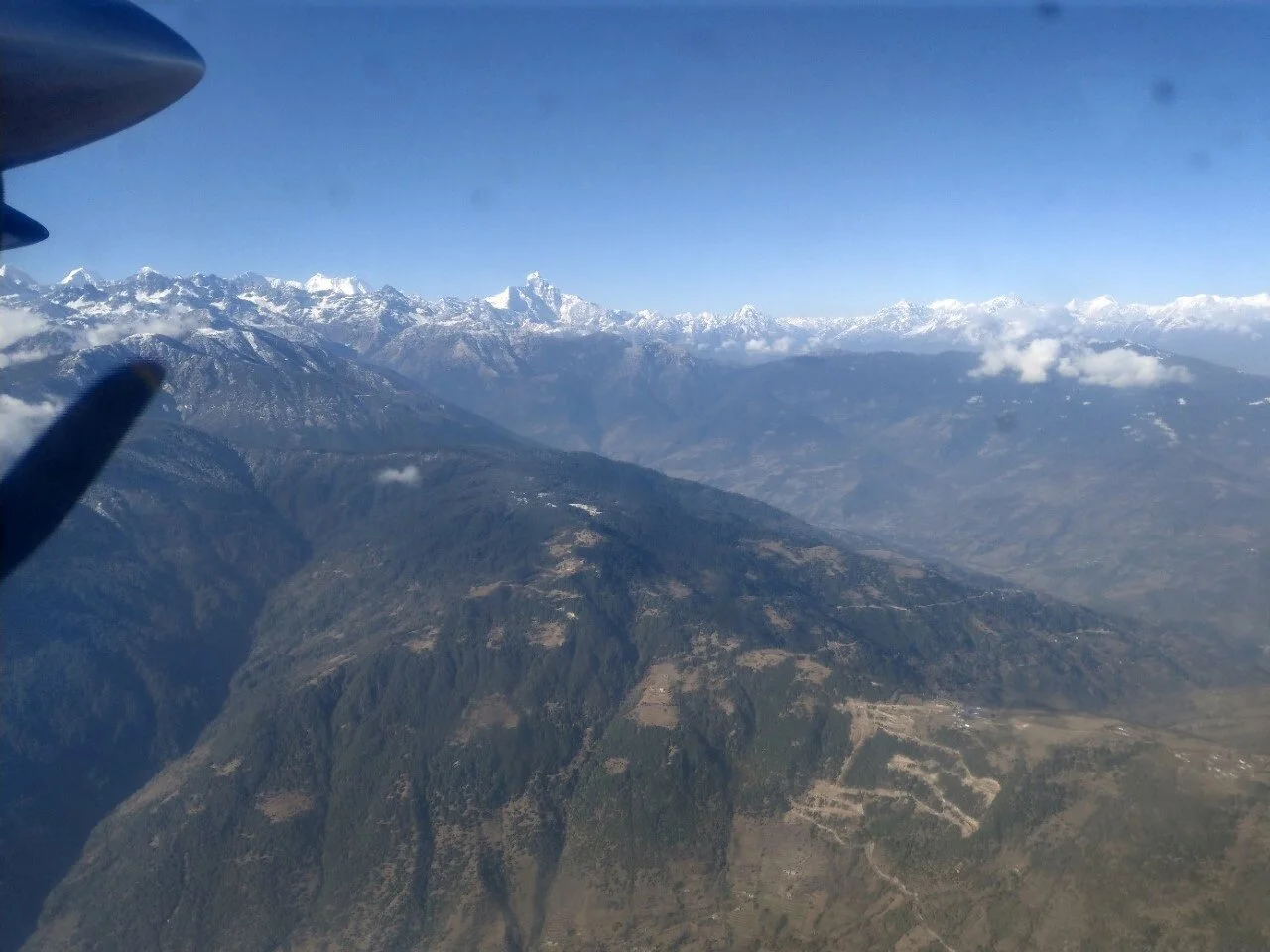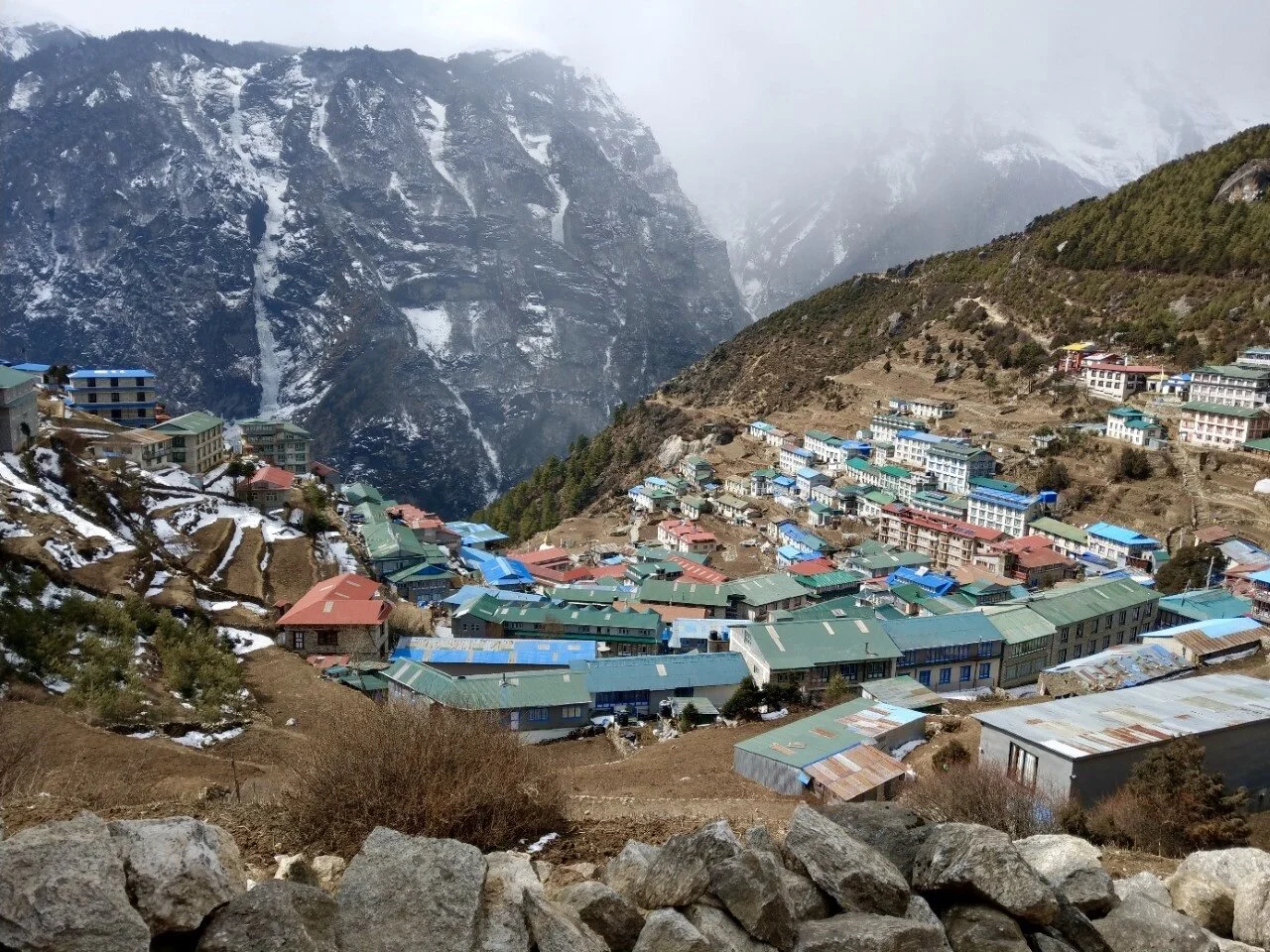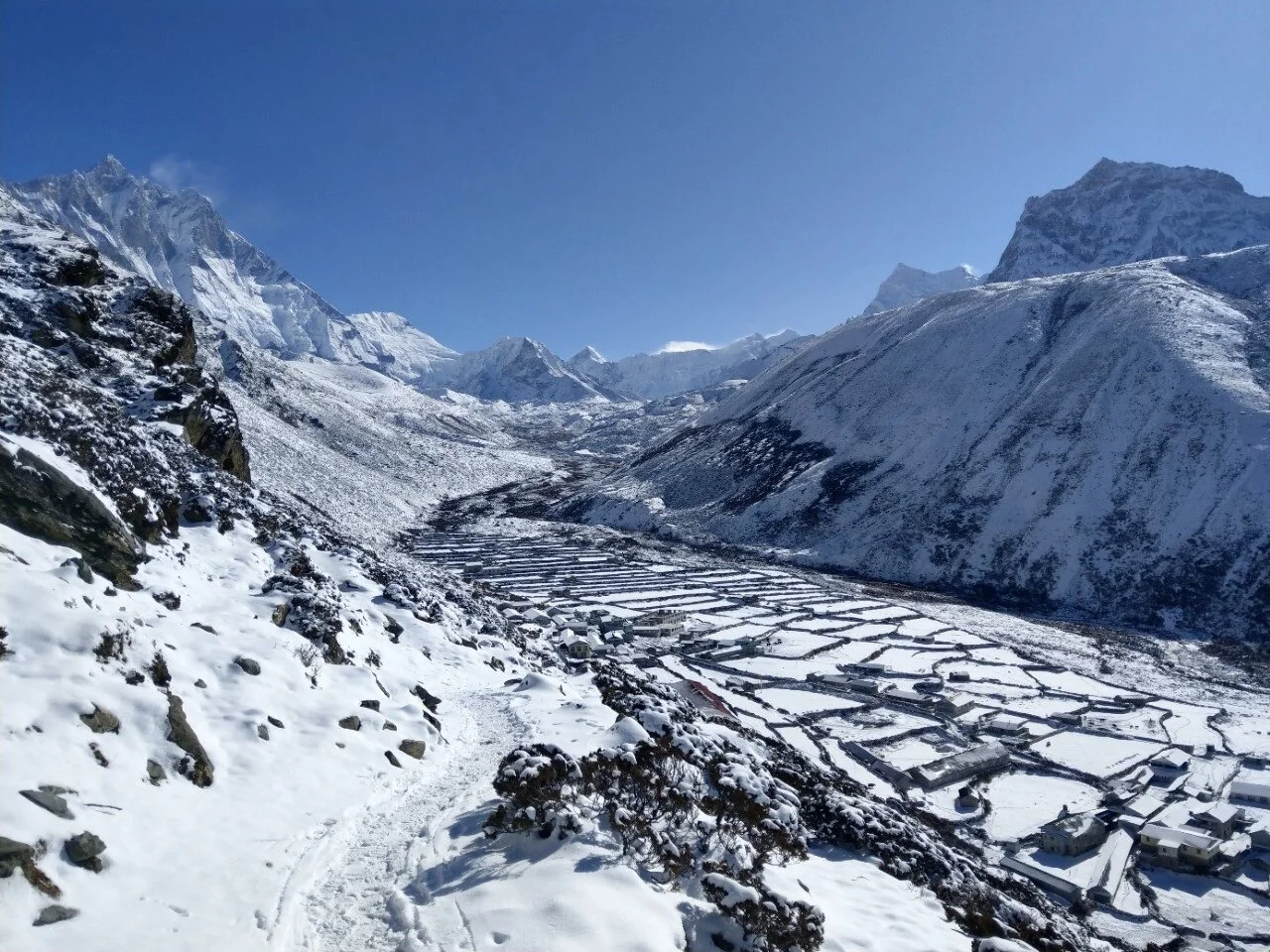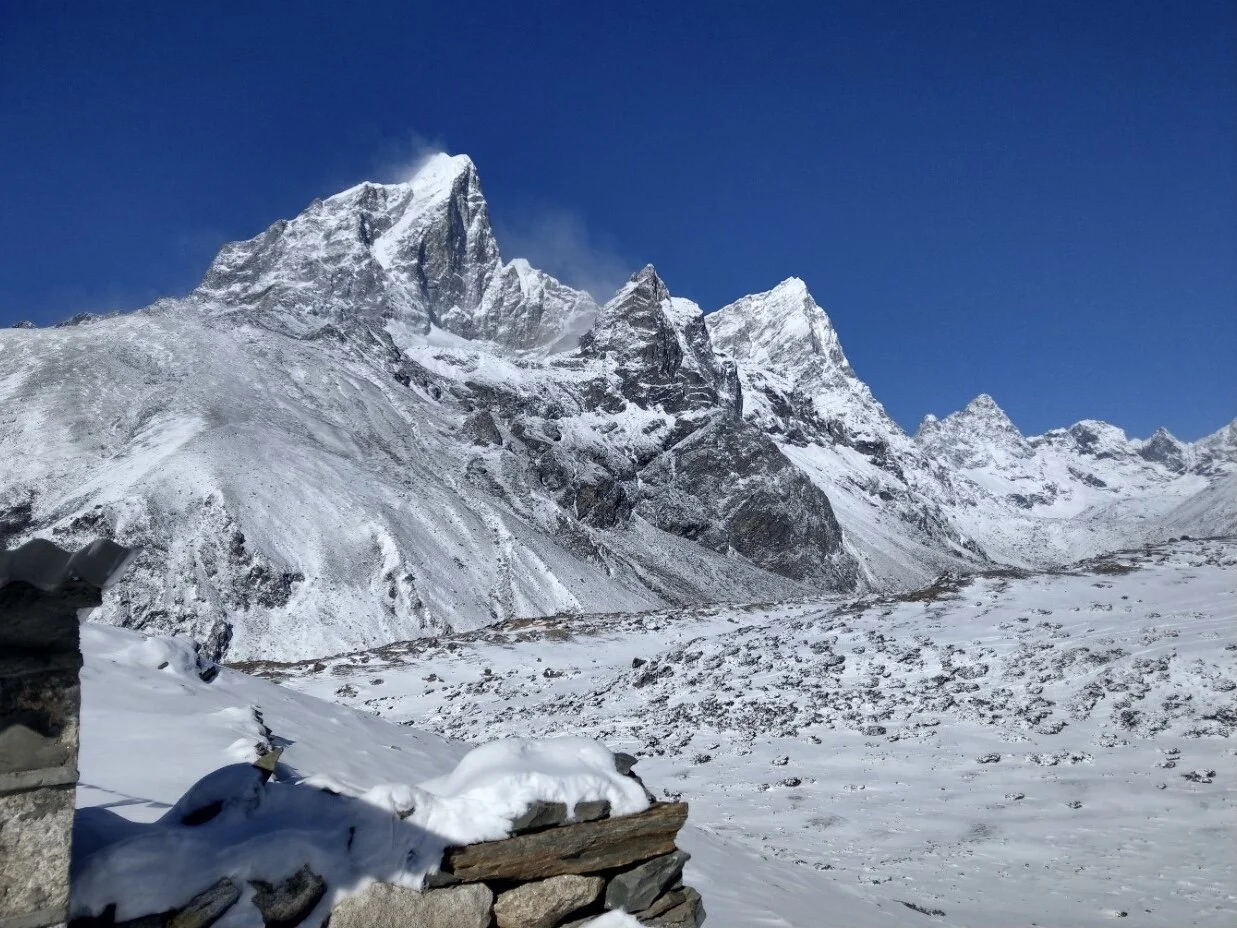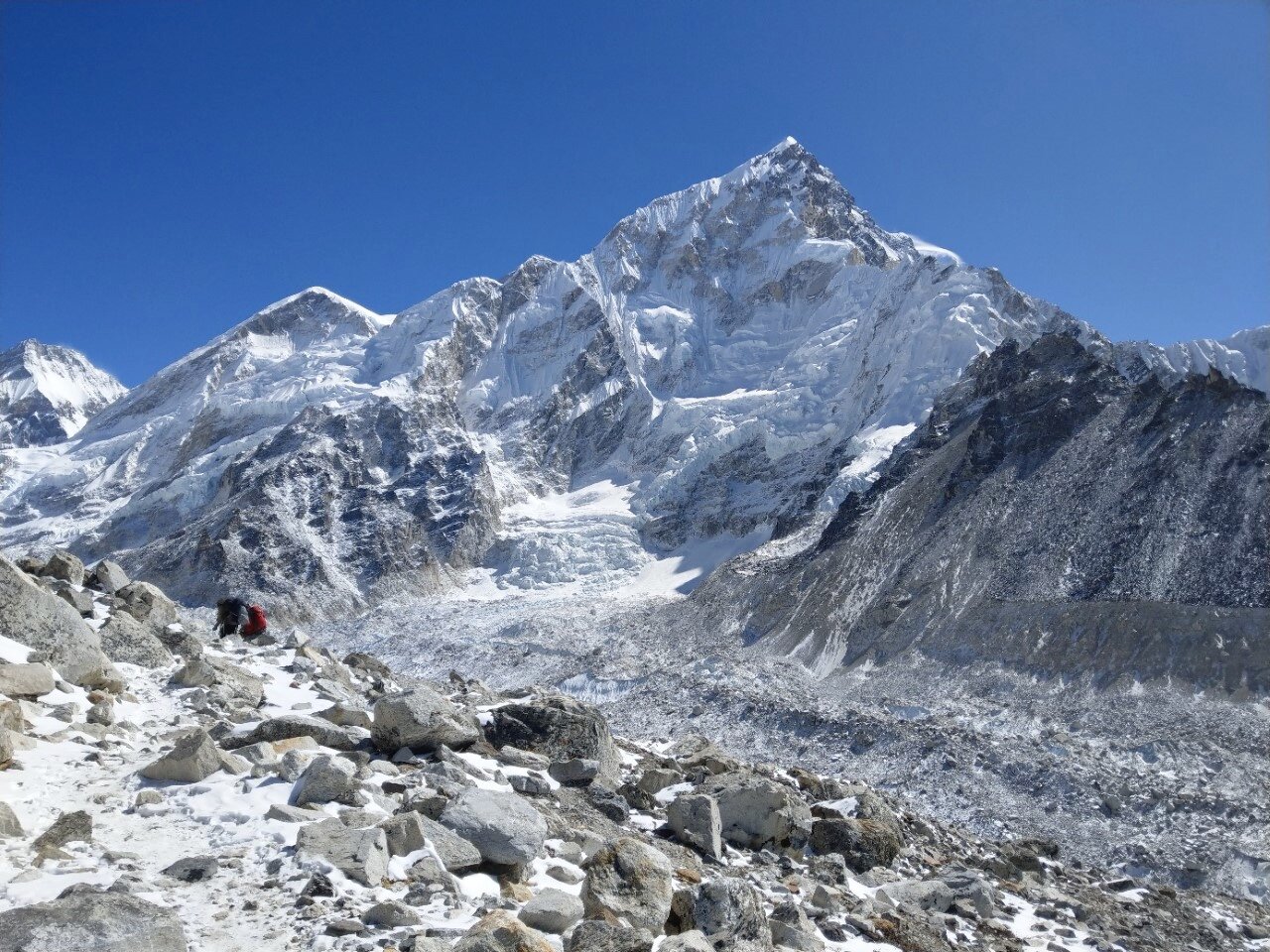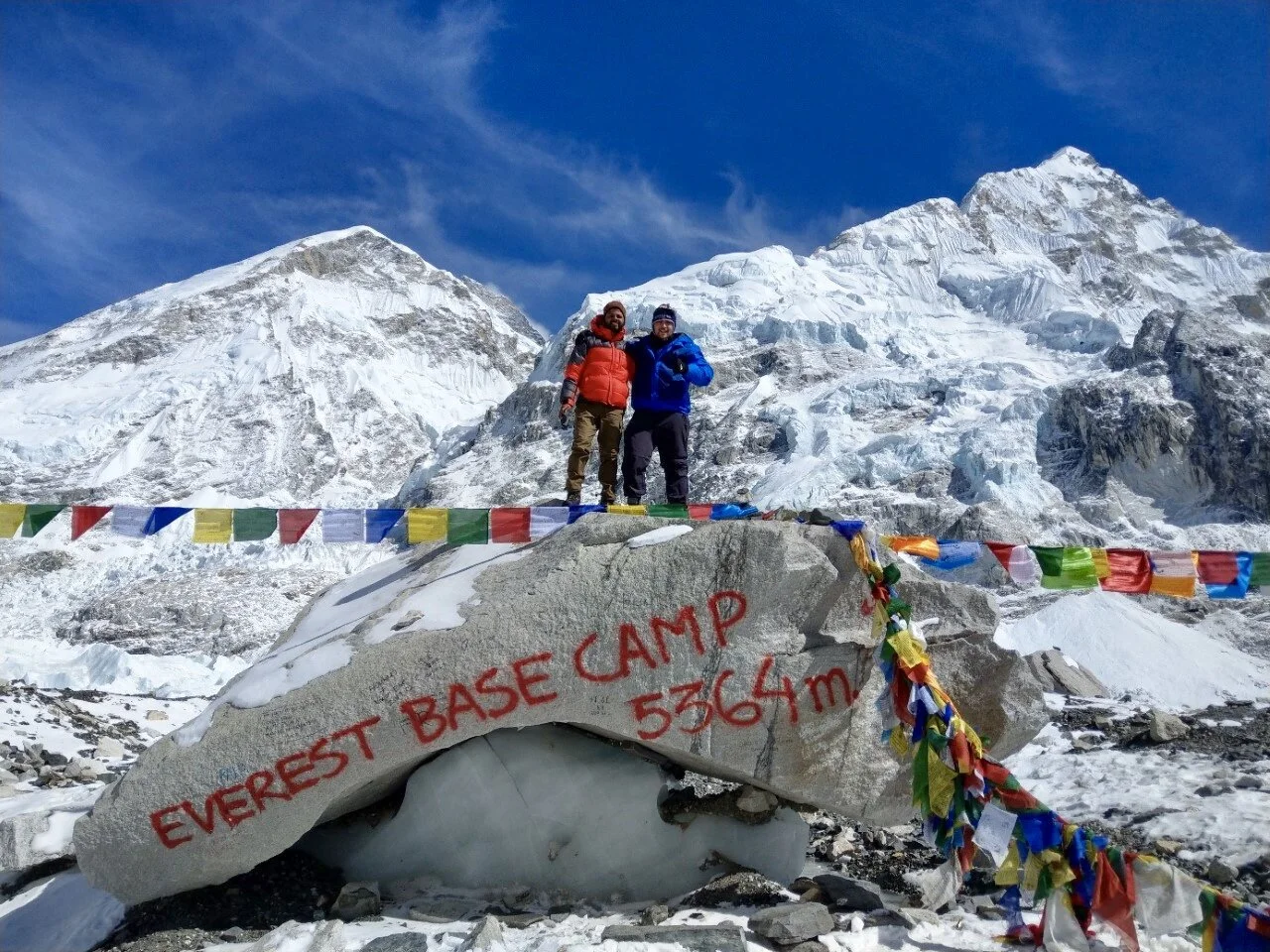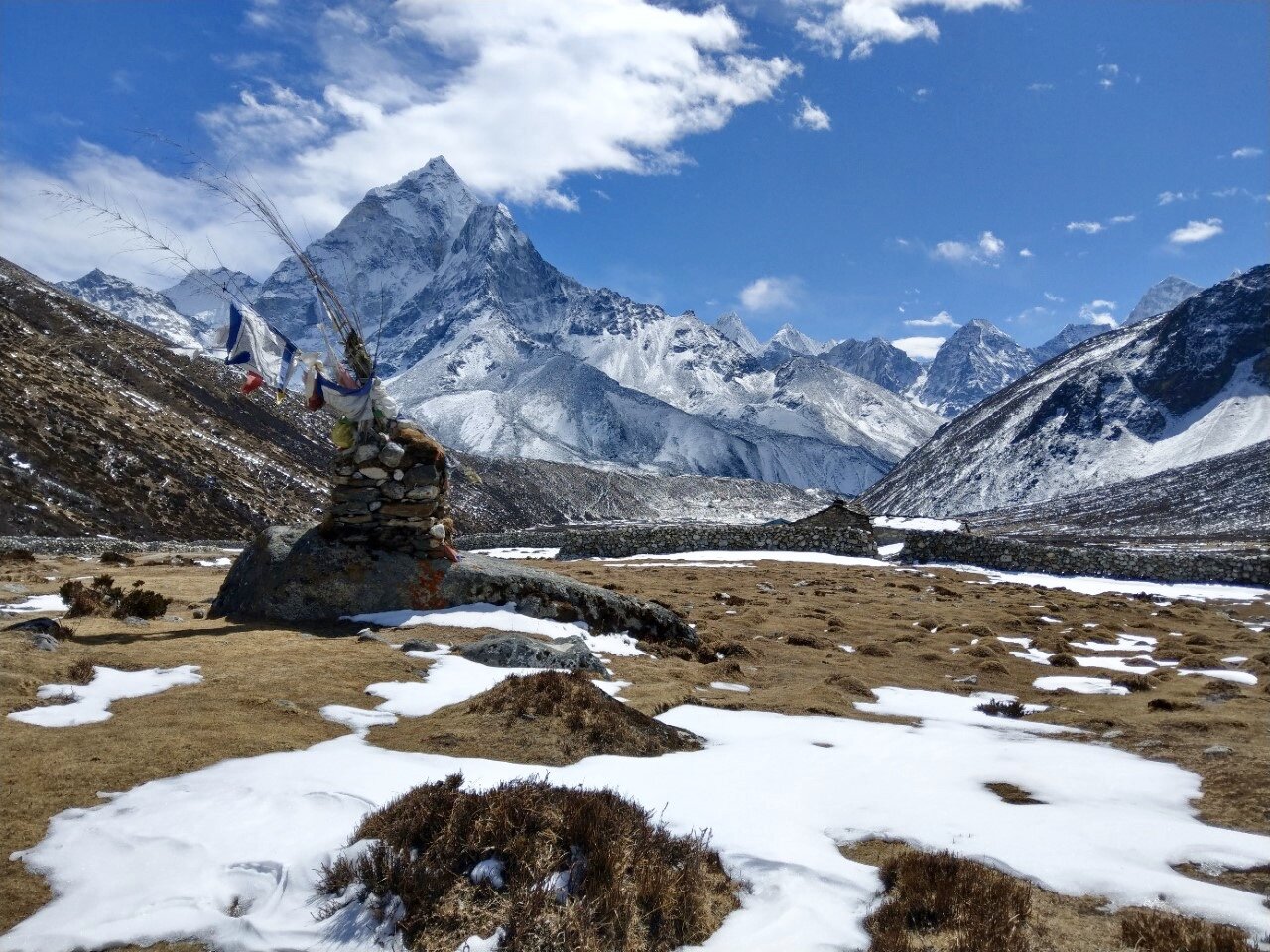The Classic - Everest Base Camp Trek
Arguably the most popular trekking route in the world, the Everest Base Camp trek astonishes its visitors with unbelievably beautiful mountain scenery. The highlight of the trip is seeing the world’s tallest peak; Mount Everest or Sagarmatha as the locals call it, which stands at a mighty 8848m above sea level.
View on the path from Namche to Tengboche.
If you want to come but avoid the crowded trails of the peak trekking season in April you can come, like I did, as early as February. Although the end of winter might not be the usual time to travel in the Solukhumbu region, the peace and tranquillity along the trail will surely make up for the cooler mornings. These days the teahouse lodgings are astonishing good considering their remote location and mountainous surrounds and will provide a warm place to rest and plenty of hot tea to warm your core. You can even find a hot shower at some places and with Everest Link, you can even have internet access all the way to Base Camp!
Starting in Kathmandu, one of the most exciting parts of this adventure is first up with the flight to Lukla. This “Altiport” stands at 2846m and has the reputation of being one of world’s most dangerous airports. In recent years the airstrip has been improved a lot and only the best pilots are allowed to land at the Tenzing-Hillary Airport. The flight into the heart of the Himalayas will likely leave early in the morning when the weather is best and when you will be rewarded with spectacular views across the beautiful snow capped mountains. After a hair raising but successful touchdown in Lukla we checkin to our lodge and have the rest of the day to look around the village and to get used to the altitude.
View on the Himalayas from inside the plane.
If you prefer not to fly and have an extra week up your sleeve, you can take a bus from Kathmandu to the village of Jiri and start your trek from there. This route passes through the beautiful green landscapes and culturally rich communities of the Himalayan foothills and will also ensure that you are nice and fit before you reach the higher sections of the EBC trail.
As I already trekked the Annapurna Circuit with Govinda, i decided to take him as my guide as I knew I can count on his experience when it came to the planning and logistics of my trip. Most of the EBC trails are at high altitude so it is highly recommended to have an experienced guide in case of any problems.
Lukla – Namche
After walking past the last of the cafes and shops that line the main street of Lukla, the trail follows the Dudh Kosi river, which it crosses back and forth by suspension bridges that link up the beautiful sections of forest and farmland trail. After a relatively easy walk up the valley through the picturesque landscape you can call it a day after reaching the small riverside village of Phakding. The second day gives you more of a challenge with the climb up out of the valley reaching the mountainside village of Namche Bazaar at an altitude of 3440m. As you climb and gain altitude you will likely start to feel the affects of the high altitude on your body. Luckily there is a perfect rest point half way up this hill where you should get a glimpse of Mount Everest and will also have the chance to rest your body before the final push to Namche.
We decided to have an acclimatisation day in the Sherpa capital to let our bodies adapt to the thinner air which was also a great opportunity to explore and enjoy all that this vibrant little town had to offer.
Namche Bazaar
Namche – Dingboche
After the rest day in Namche, you will turn towards the mountains and head for Tengboche. This spectacular stone path traverses across mountainside as it offers up one of the world’s most beautiful views of not only Mount Everest and Lhotse in the distance, but also the stunning Ama Dablam, by far my favourite peak, that towers above you as you slowly pass under its enormous presence. As you continue along the trail you will come across Buddhist stupas and herds of Yaks before you wind up through a series switchbacks to reach the monastery of Tengboche. As you catch your breath and step out onto hilltop clearing the stunningly colourful and ornately decorated monastery will appear before you. Do not miss the opportunity to take the time to explore inside the monastery and see its monks as they make their daily prayers.
The next day, you climb further up into the mountains as you pass the tree line where the valley opens up to reveal a landscape of rocky outcrops and endless mountain peaks. As more and more mountains appear it’s hard not to become overwhelmed by their size and beauty. As we were now at over 4000 metres the chance of snow, especially this early in the season, was high and despite the cold we were excited to see it transform the landscape into a winter wonderland. The snow also reminded us why we brought lots of warm clothes and invested in good trekking boots!
Dingboche. View on Lhotse (left) and Makalu in the far (centre-right).
Dingboche – Gorak Shep and Everest Base Camp
The final stretch up to Base Camp was the most challenging, but also by far the most rewarding. As you climb higher you are surrounded by the huge mountain peaks of Lhotse, Nuptse, Taboche, Pumori, and can now also see the eight-thousanders of Cho-Oyu and Makalu off in the distance. The final push of the day is up around the Khumbu Glacier to over 5000m where you will find the village of Lobuche and your home for the night. The following days trek follows alongside the expressive Khumbu Glacier where you can see down at the minefield of cracks and crevices that cover its icy surface. Luckily we don’t need to cross these as our trail takes a much kinder route up the side of the valley towards Base Camp.
Taboche and Cholatse
Slowly and steadily, or bistare bistare as we always said in Nepali, as you take your time to reach the tiny settlement of Gorak Shep. You leave everything you don’t need for the day here and make the final push up to Base Camp. Make sure you have a big portion of Dal Bhat, lentils and rice, for lunch before you climb the last section to the world famous Everest Base Camp. Celibate your achievement as you stand in the shadow of the world’s tallest mountain and look around the base camp where mountaineers are only just starting there own journeys to the summit of Mount Everest. Enjoy the moment and take your time to soak up the beautiful mountain scenery that is literally surrounding you. You may also reward yourself with some treats and chocolate (Thank you Govinda) and don’t forget to take a lot of photos! Quite astonishingly you may actually feel quite hot up here because the snow on all the peaks surrounding you is reflecting the sun rays into the valley. How welcoming! With only half the oxygen of at sea level at this altitude you body will be struggling a little so take your time as you return to Gorek Shep for the night and a well deserved rest after your big day.
Nuptse and the Khumbu glacier underneath
Everest Base Camp with Govinda Timalsina from Hi Himalaya Nepal.
For the best view of Mount Everest you can also tackle the climb up to the incredible viewpoint of Kala Patthar the next morning if you still have enough energy for it!Unfortunately I started to have knee problems, so I decided to not take the risk. Rule Number 1: Always listen to your body!
The Way Back Down: Gorak Shep – Pangboche – Namche – Lukla
While descending your way back to where you started your trek, you will feel the rich air of lower altitude boost your energy levels. As you return downwards you can descend down the opposite side of the valley which will feel like a totally different route with a different perspective and plenty of new view points. On the way down alongside the river you will pass through the small village of Pheriche, where the majestic Ama Dablam watches over you. Just wow!
Ama Dablam on the way to Pheriche.
After lunch in Pheriche, you can decide if you still feel fit for descending further to Pangboche or just relaxing in the sun for the afternoon staying the night here. We decided to stay in the beautiful Sherpa village of Pangboche. If you want, you can also take the route through Khumjung, another charming village full of culture, before returning to Namche.
Reaching Namche feels like coming home and you will be able to return to your favourite cafe or bar for a celebratory drink with friends made along the way. Definitely one of the best things you can treat yourself with here is a hot shower!
On the last day, you descend all the way back down to Lukla to catch your flight out the next morning. The last part of the trail climbs up from Phakding to Lukla but after all your time in the mountains this will now feel like a breeze to you. Once again you can enjoy your last day in the mountains with a beer or two and reflect on what an awesome experience you have had in the beautiful mountains of Nepal.
The Everest Base Camp trek not only has incredible mountain scenery, it also shines with the rich cultural heritage of the Sherpa people in the Solukhumbu region and the beautiful flora and fauna in lower altitudes.
To put it in a nutshell, this trek is a once in a lifetime experience that you will always remember, thanks for the perfect trip with Hi Himalaya Nepal!
